Apps Home
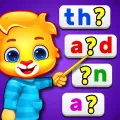
The Importance of Sight Words in Early Childhood Education
Sight words form the backbone of a child's reading journey, especially in the early stages of literacy development. These words are commonly found in everyday texts and often do not conform to regular phonetic patterns, making them tricky for young readers to sound out using standard phonics rules. The aim of sight words is to facilitate reading fluency by enabling children to recognize these words instantly, minimizing the need for decoding, and thereby improving their comprehension and confidence. For instance, words like 'the', 'and', 'it', and 'in' appear frequently across children's literature, and their quick recognition allows for a smoother reading experience. This instant recognition is crucial because it frees cognitive resources, allowing children to focus on new and more complex words and phrases. By embedding these words into visually engaging and interactive games, children can practice recognizing them in a stress-free environment where the pressure of outcome is minimal, hence increasing retention. Moreover, sight words provide a foundational linguistic structure that broadens a child's vocabulary and linguistic competence as they encounter these words in real-world contexts. For educators, combining sight word recognition with phonics instruction can create a balanced literacy program that supports both decoding skills and word recognition. Different instructional strategies such as sequential learning, where simpler sight words are introduced before complex ones, further aid in systematically building up a child's reading skills. Research in cognitive development has shown that repetitive exposure to these words through play and interactive learning significantly enhances retention and recall. Therefore, integrating sight words into early childhood education is non-negotiable for nurturing proficient and confident readers.
Innovative Techniques for Teaching Sight Words
Teaching sight words goes beyond rote memorization. With the advent of educational technology, innovative techniques offer varied and dynamic learning experiences, making the process enjoyable for children. One of the effective strategies involves using flashcards. Digital flashcards, for instance, can incorporate sound, animation, and interactive feedback, enhancing the engagement level way beyond traditional methods. Through game-like environments, children can receive instant feedback, helping them correct mistakes on the spot and learn at their own pace. Additionally, educational apps have incorporated voice narration alongside these flashcards, fostering auditory learning and helping children to associate words with their spoken form, improving pronunciation and phonemic awareness. Another technique is involving sight words in interactive mini-games where children can drag and drop letters to form words, solve puzzles that require matching words with their sounds, or play memory games that reinforce word recognition through repetition. Such games harness the power of play-based learning, which is crucial for early childhood education. Moreover, sentence-building activities can help children understand the function of sight words in context, enhancing both grammar and reading comprehension skills. Using technology, apps now allow these activities to be customized according to the individual learner's progress, offering a tailored educational experience. These innovations not only make learning more accessible but also ensure that the teaching of sight words develops a child’s cognitive, linguistic, and motor skills in an integrated approach. Thus, innovative techniques in teaching sight words effectively use modern technology to bridge traditional educational theories with contemporary practices.
Understanding Dolch Sight Words and Their Application
The Dolch Sight Words, also known as the Dolch Word List, comprises some of the most frequently used words in the English language, identified by Edward William Dolch in the 1930s. These words were hand-picked based on their prevalence in children's books and texts used by young learners, and they continue to be relevant in contemporary education contexts. The list spans various educational levels, starting from Pre-K to third grade, and is segmented to match developmental stages, which helps educators employ it within curriculum frameworks effectively. By focusing on sight words that cut across all text genres—from storybooks to academic materials—this list ensures that children have a solid reading foundation applicable across subjects. Most Dolch words are function words, including pronouns, adjectives, verbs, and conjunctions, essential for constructing meaningful sentences and expressing complete thoughts. By internalizing these words, children become adept at reading with fluency and comprehension much earlier than they would if taught through phonic learning alone. In practical applications, teachers and educators employ the Dolch list in various activities ranging from simple flashcard drills to complex interactive games, each reinforcing word familiarity and encouraging self-paced learning. Moreover, parents who are increasingly involved in early literacy efforts at home can utilize these words, supported by digital resources, effectively turning interaction time into constructive learning sessions. Ultimately, the Dolch Sight Words provide a strategic overlay to traditional literacy education, aiding teachers and students alike in improving reading speed and comprehension—key components in academic success.
The Fusion of Technology and Learning for Sight Words
Technology has revolutionized our educational landscape, offering diverse and multifaceted learning tools that were unimaginable just decades ago. This transformation is especially evident in the way sight words are taught today. Through the use of mobile apps, youngsters are exposed to immersive learning environments where they can explore sight words in exciting and engaging ways. For example, educational apps like the one available for Android allow children to develop proficiency through play, as these platforms are designed to cater to various learning styles. Visual learners benefit from colorful interfaces and animations, while auditory learners thrive from apps that provide clear voice narration, ensuring correct pronunciation and aiding in phonological processing. Technology doesn't just stop at providing content but allows for the personalization of learning trajectories. Advanced algorithms track a child’s progress, adapting the difficulty level of games and exercises to suit their individual learning curve—a concept known as adaptive learning. The impact of such tailored instruction means that children can practice sights words aligned with their current capabilities rather than being constrained by a one-size-fits-all curriculum. This adaptability is crucial as it empowers children to overcome challenges at their own pace, boosting their confidence and fostering a lifelong love of learning. The fusion of technology and sight words also extends learning beyond the classroom. Educational resources are now accessible offline, enabling consistent learning without the dependence on internet connectivity, an especially valuable feature for settings with unreliable access. By digitizing the teaching of sight words, technology not only enriches the educational experience but also supports holistic childhood development—a goal at the heart of every progressive learning initiative.
Downloading and Using Educational Games for Sight Words
When it comes to reinforcing sight word learning, downloading educational games offers a convenient and comprehensive way for both children and educators to access high-quality resources. Platforms that deliver these educational games often do so with the promise of child safety, ensuring environments free from ads, distractions, and unnecessary subscriptions, thus fostering uninterrupted learning. For instance, the app available on Android provides a compelling example of how these resources can be both engaging and child-friendly. The games feature customizable levels, allowing users to select specific grade-aligned Dolch sight words they wish to focus on, ranging from Pre-K to Grade 3. This option ensures that children are not overwhelmed by material too advanced for their current level, providing a structured yet flexible approach to learning. Additionally, parents, teachers, and even homeschooling families will find that such educational games fit seamlessly into existing curriculums or independently as part of home learning sessions. By using anchor links to download such platforms, like the Download for Android, users can easily acquire these tools with just a click. This instantaneous access supports educational continuity, especially crucial in modern settings where learning can be disrupted by factors beyond control, such as network accessibility or geographical constraints. Ultimately, embracing educational games for teaching sight words not only enriches the learning tapestry for young minds but strengthens the educational bond between technology and literacy. The seamless blend of interactive content, adaptive learning measures, and easy accessibility underscores the pivotal role that digital resources play in reimagining early childhood education.
Share Your Opinion
Your Email Will Not Be Published.
All Rights Reserved © Apps Home 2025
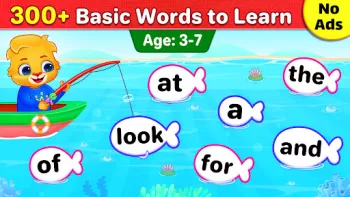
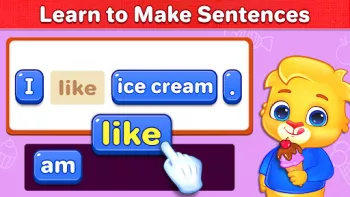
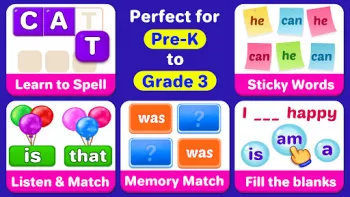

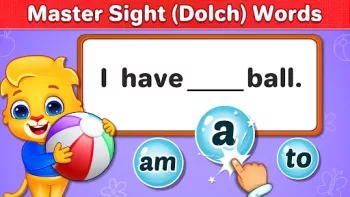
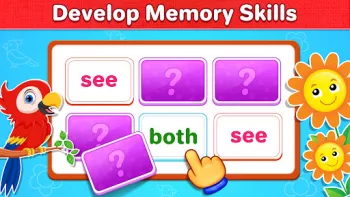
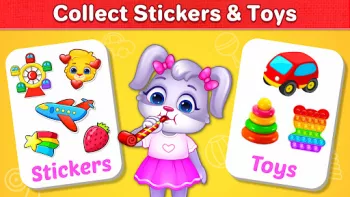
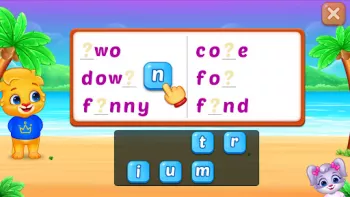
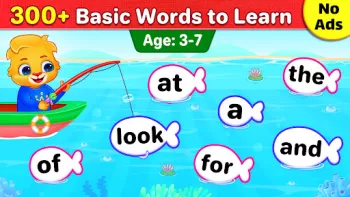
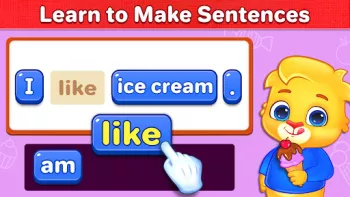
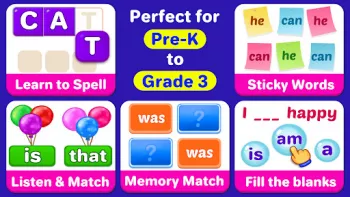
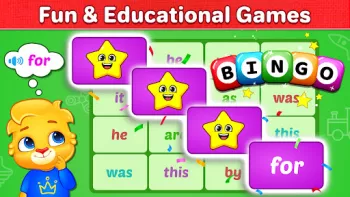


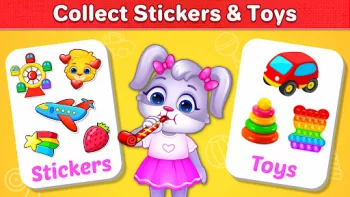
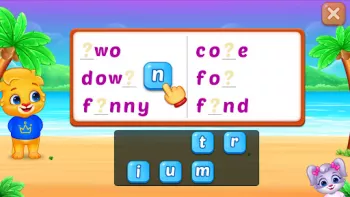
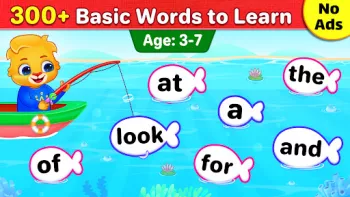

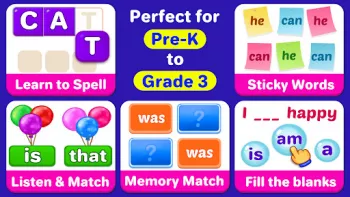
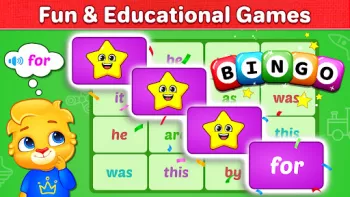
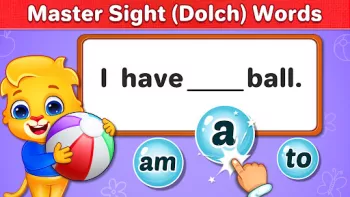
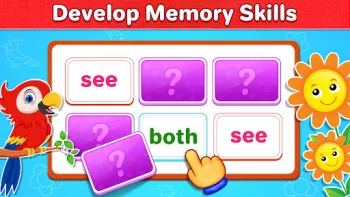
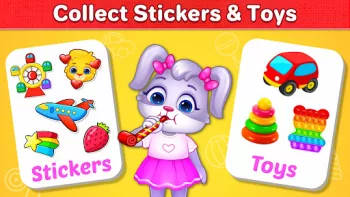
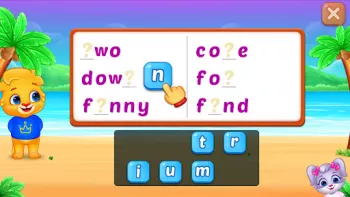
























bethi sravani
one of the best app for kg kids ..I really like this app bcz it has no adds and it made the learning fun.
Jackie Kidwell
Although I have zero spelling problems, this game is so cute and fun and if you're not good at puzzles, it does offer a challenge !! I cannot imagi...
mahmoud luqman
please extend the stars so that I can like more. thank you for always helping my kids
Krystal Goin-Chester
My boys are 5 and 6 and they get so excited to play on this. I love there are no ads, no in app purchases to worry about them accidendally buying t...
Forum Patel
its really awesome..it's better for kids to learn and play with this. I am sharing this to all of my friends and specially those parents whose kids...